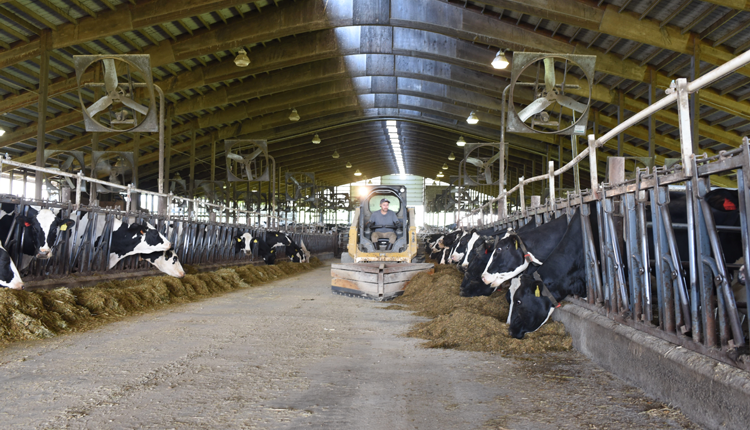
According to data maintained by the U.S. Department of Agriculture’s Economic Research Service for the first five months of 2017, total production of dairy products on a milk equivalent, skim solids basis rose by 1.3 billion pounds relative to the same period in 2016. This marks the fourth consecutive year with expansion during the January-through-May time period.
This continued expansion in U.S. dairy supplies requires expanded consumption, either domestically or internationally. When a large portion of production expansion is consumed domestically, it usually requires lower milk and dairy product prices to provide the needed lift in consumption.
Moving additional U.S. dairy products into world markets can often provide lift to U.S. dairy prices. U.S. dairy exports increased by 2.1 billion pounds on a milk equivalent, skim solids basis in 2017, the largest gain from the January through May period since 2010. These new sales have helped move U.S. dairy and milk prices higher.
Despite the strong gain in dairy exports over the January through May period this year, they still lag the level exported in the first five months of 2014. If U.S. milk supplies continue to grow, it is critical to experience continued growth in the level of U.S. dairy exports or domestic milk and dairy prices will likely falter.
While the first five months of this year registered growth in dairy exports, domestic use contracted by 1.3 billion pounds on a milk equivalent, skim solids basis relative to the same period in 2016. This change is logical, as strong export demand has taken the additional domestic production this year plus pulled use away from domestic markets in an effort to fill growing international demand.
Sales at home matter, too
However, it is important not to overlook the importance of the domestic market for dairy products. For the first five months of 2017, domestic use totaled 74.4 billion pounds on a milk equivalent, skim solids basis, 4.4 times the level of exports. Stronger domestic demand for dairy products would have resulted in higher milk prices. A slowdown or reversal in declining demand for fluid milk products could be important to the outlook for milk prices in the medium term.
With the expected continued expansion of U.S. milk supplies, stronger domestic and international demand for dairy products will be crucial to keep milk prices at higher levels. Despite stronger growth expected from many countries for U.S. dairy products, domestic markets will still consumer the majority of U.S. milk supplies.







